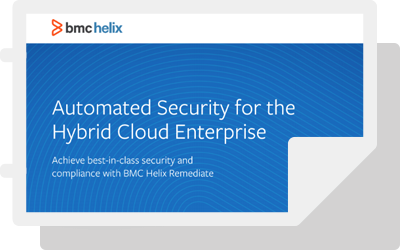For any large government agency, managing cloud migrations can be fraught with risk, complexity, and hidden costs. However, the U.S. Department of Agriculture (USDA) was able to overcome these obstacles and establish winning implementations in the public, or commercial, cloud. How? In this first of our two-part blog, we offer background on the USDA, the IT operations team’s challenges and objectives, and the new services that have been established. In our second post, we’ll detail some of the key strategies that enabled the USDA to effectively manage its cloud migration.
Introduction to the USDA
With nearly 100,000 employees, the USDA is a large agency with a broad and important charter. Comprised of 29 agencies, the USDA provides leadership in such areas as food, agriculture, natural resources, rural development, and nutrition.
Within the USDA, the IT team plays a significant role in supporting an extensive array of services and initiatives. In many respects, the IT operations group has been set up to operate as an independent service provider rather than an internal department. Led by the CIO’s office, the organization delivers services to a range of “customers,” including both internal departments and other federal agencies.
Making the Move to the Public Cloud
Scott O’Hare is director of IT Operations for the USDA. He and his team have been offering hosting and private cloud services to customers for more than 10 years.
In recent months, O’Hare and his team have embarked on a strategic initiative to extend their service offerings into the public cloud provider segment. Now, in addition to its traditional offerings, the team offers services based on Azure and AWS, for example. Through its new services, the team will offer customers a range of options in terms of where they can host applications and platforms. The organization can now support a number of hybrid approaches, such as cloud bursting, where customers may have a private data center and, when usage peaks arise, extend into the public cloud. Plus, customers can now go through a self-service portal that provides easy access to private and public cloud services.
For a federal agency, making this move to the public cloud represented a strategic, complex, and large-scale effort. We recently had the chance to interview O’Hare and learn about his organization, how he and his team successfully incorporated public cloud offerings into their service mix, and some of the key lessons they’ve learned along the way.
For organizations in the midst of making the move into public cloud environments, particularly those within government agencies, the experience of the USDA can provide invaluable insights into pragmatically and successfully adopting new cloud approaches and services.
In the sections below, we start by outlining some of the organization’s key challenges and objectives. We also offer an overview of their new offerings and services. In the second part of this two-part post, we’ll feature some of the top strategies O’Hare and his team employed and the benefits they realized as a result.
Organization Challenges
For some time, the IT operations team had been offering customers cloud services through a private data center model. In recent years, as the cloud market, and the technology landscape more generally, continued to see ever more rapid change, it grew increasingly challenging to keep pace with evolving customer requirements and expectations.
“Especially as a large data center provider, adapting and scaling to meet customer demand was difficult,” O’Hare explained. “When working with a new customer, our team struggled to quickly and efficiently do the necessary procurements, get the required equipment set up, and so on.”
Objectives: Harnessing the Cost Models of the Public Cloud
Given the evolving requirements of the IT operations team and its customers, the advantages of the public cloud began to look increasingly enticing. The team sought to move away from having to make the large capital expenditures that were required to maintain and expand their private cloud. By leveraging public cloud offerings, they could capitalize on cost models that offered several key advantages:
- They could move to an operating expense payment model, one that would offer them the ability to pay only for the services being consumed.
- They’d be able to pass their costs directly to their customers as services are used, rather than having to accrue significant expenses up front, well before customers would be paying for the services.
- They could pass savings on to customers because the IT team wouldn’t have to pay for the entire data center footprint, but rather only for whatever services are actually used.
At the same time, they’d be able to tap into public cloud providers that have practically infinite capacity, so they could effectively scale to support customers’ rapidly expanding workloads and environments.
Overcoming Obstacles on the Public Cloud Journey
O’Hare and his team have been on a journey to the cloud for a number of years. In the past year in particular, the team has made substantial progress.
“The process of completely reinventing approaches and models in the cloud can be daunting,” O’Hare revealed. “Often people can find new technologies and approaches complex and overwhelming, but the reality is that technology doesn’t have to be an obstacle at all.”
Through this effort, O’Hare came to realize that culture tends to represent a bigger obstacle to cloud migration than just about any other area. Introducing cloud and automation initiatives can immediately leave many staff members concerned about their jobs going away, or potentially being changed fundamentally. This can make it difficult to gain the required buy-in and participation. Further, many team members had been with the agency for decades, and had largely been employing the same workflows and tools for much of that time. In these environments, changing the way people work can be a big challenge.
New Service Offerings
By harnessing public cloud services, O’Hare and his team have been able to substantially expand the array of services they offer customers. The team has implemented a consolidated cloud portal. Now, customers can access the portal and browse and choose from a dramatically expanded set of offerings, including on-premises data center services and a range of services available in public clouds, including AWS and Azure. These services are fully managed.
“Our team helps with migration and implementation, effectively handling all the efforts required to get customers’ services up and running,” O’Hare stated. “In addition, the team helps with ongoing maintenance, including patching, compliance reporting, and more.”
Conclusion
For any organization, the promise of the cloud can be massive, however so can some of the risks. For government agencies, many of the hurdles that hinder successful cloud migrations can be magnified. By taking a cloud smart approach, O’Hare and his team at the USDA are poised to maximize the advantages of the cloud, while minimizing risks.
Be sure to keep an eye out for our next post, which will reveal a lot of the key lessons O’Hare and his team learned through this successful cloud migration initiative. In addition, you can hear our entire interview with O’Hare here.







